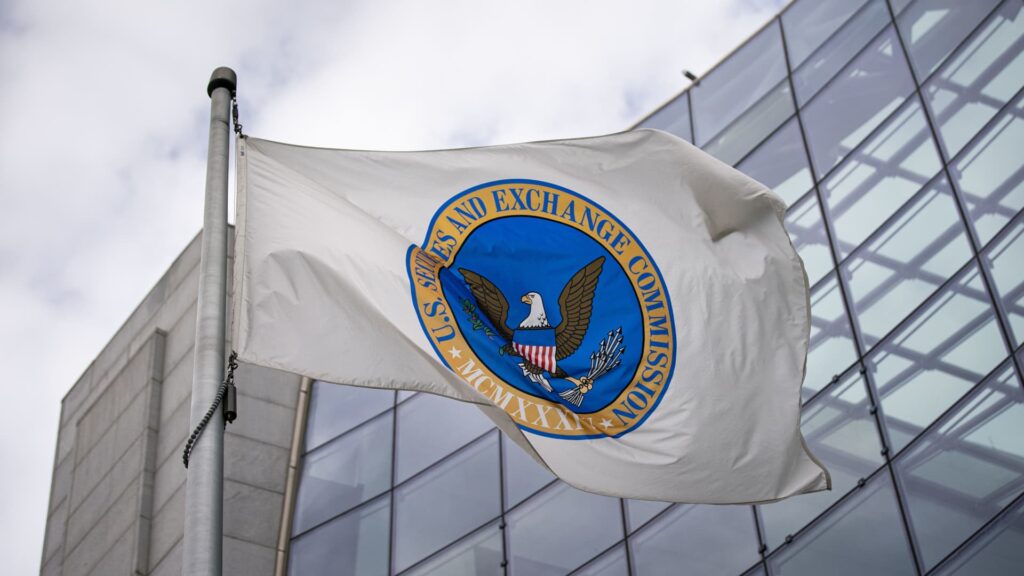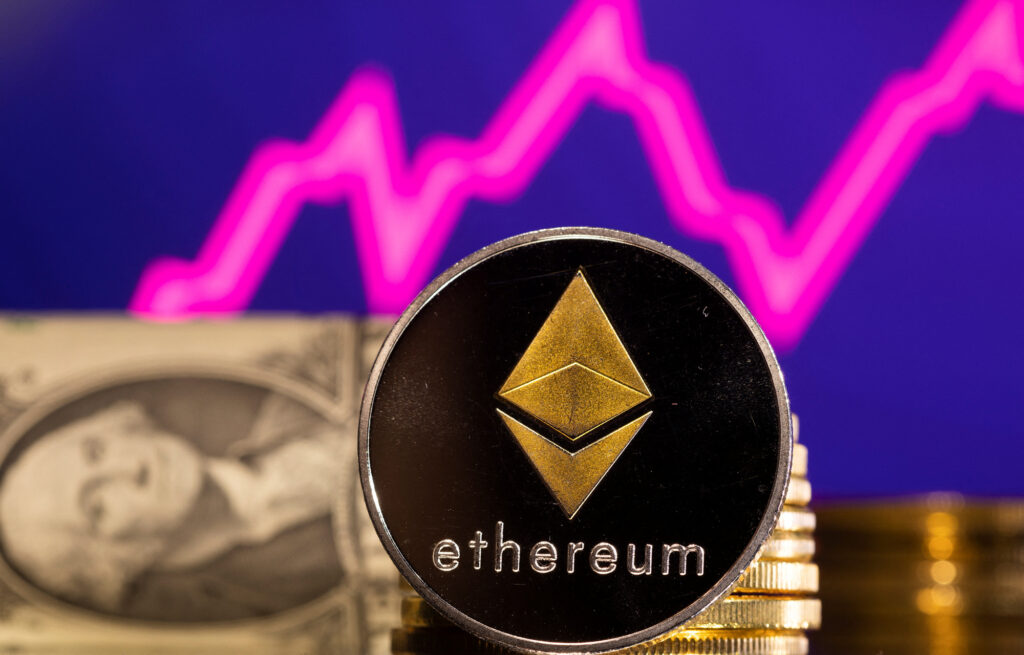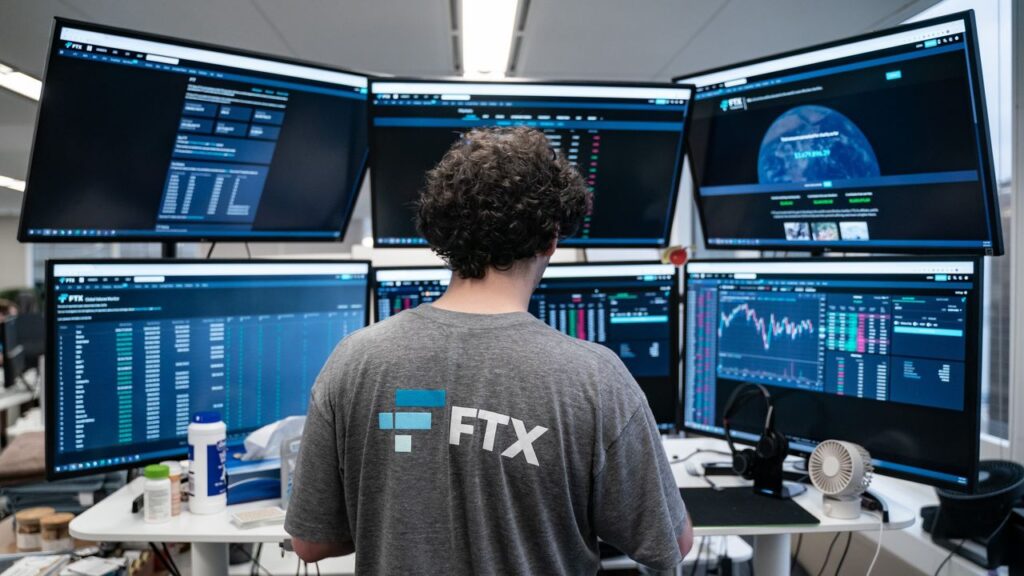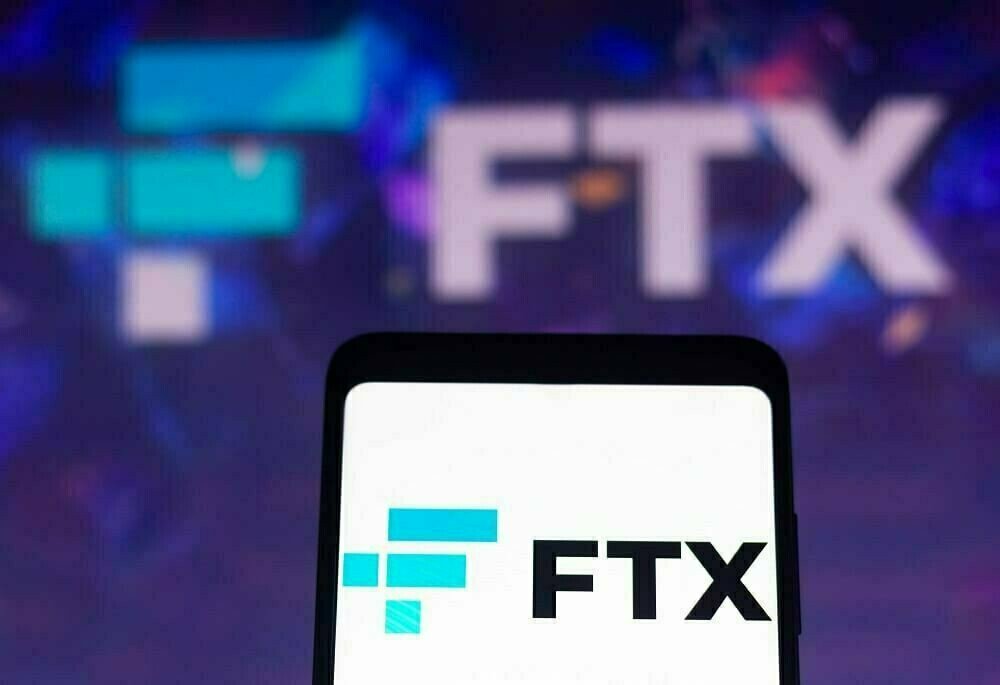Bitcoin may experience a surge in upside volatility, according to John Bollinger, the creator of the Bollinger Bands volatility indicator.
In a recent post on X (formerly Twitter), Bollinger pointed out that Bitcoin was poised for a significant breakout.
Bitcoin had reached new highs in September, challenging resistance levels that had eluded it since mid-August, as reported by data from Cointelegraph Markets Pro and TradingView.
Bollinger, however, found these developments encouraging, relying on his Bollinger Bands indicator, which utilizes standard deviation around a simple moving average to gauge price ranges and volatility.
Currently, BTC/USD is exhibiting daily candles that touch the upper band of the Bollinger Bands, which can signify an impending reversal back to the center band or a surge in upside volatility.
The recent narrow Bollinger Bands on Bitcoin contribute to the optimism that the latter scenario will prevail.
Bollinger noted, “And there is the first tag of the upper Bollinger Band after a new set of controlling bars was established at the lower band.”
However, he cautioned that it’s too early to predict if Bitcoin will continue its upward trajectory along the upper band.
READ MORE: NFL Quarterback Trevor Lawrence and YouTube Influencers Settle FTX Lawsuit
This narrowing of the Bollinger Bands was previously observed in July and preceded a return to lower price levels.
Bollinger’s analysis aligns with the sentiments of seasoned Bitcoin traders and analysts on shorter timeframes.
Despite the recent strength in Bitcoin’s performance, there is a sense of caution in the market.
Various trendlines that previously acted as support are still above the current spot price.
On-chain monitoring resource Material Indicators advised X subscribers to be skeptical of bullish momentum.
The commentary from Material Indicators highlighted the presence of technical resistance at the Key Moving Averages and support at the LL (likely low).
It suggested that Bitcoin might trade within a range and emphasized the importance of upcoming tests of R/S (Resistance/Support) levels to gain clarity about Bitcoin’s direction in the coming week.
Additionally, Material Indicators referenced the impending decision by the United States Federal Reserve regarding interest rates.
This decision could potentially introduce sudden volatility and unreliable short-term trading signals, further complicating Bitcoin’s near-term outlook.
Other Stories:
Magic Eden Unveils Solana’s cNFT Support
FTX Reopens Secure Customer Claims Portal Following Cyberattack
Bitcoin Stabilizes at $26,500 After Hitting September Highs: Eyes on Federal Reserve’s FOMC Meeting
The United States Securities and Exchange Commission (SEC) encountered a setback in its pursuit of immediate access to Binance.US’s software during a hearing held on September 18.
The SEC had filed a motion to compel Binance to provide detailed information and make its executives more available for depositions, a contentious issue in their recent interactions.
Judge Faruqui presided over the hearing and expressed reluctance to grant immediate access, stating that he was “not inclined to allow the inspection at this time.”
Instead, he suggested that the SEC should formulate more specific discovery requests and engage with a broader array of witnesses, as reported by Bloomberg on September 18.
The SEC has been vocal about its difficulties in obtaining information from Binance.US ever since it filed a lawsuit against the American branch of the cryptocurrency exchange, along with its global affiliate Binance Holdings Ltd and CEO Changpeng “CZ” Zhao on June 5.
The lawsuit alleges their involvement in the sale of unregistered securities.
On September 15, the SEC accused Binance.US of noncooperation in the investigation.
READ MORE:Magic Eden Unveils Solana’s cNFT Support
The regulator pointed out that Binance.US’s parent company, BAM Trading, had produced a mere 220 documents during the discovery process.
Many of these documents were described as “unintelligible screenshots and documents without dates or signatures.”
Furthermore, BAM had been reluctant to make crucial witnesses available for deposition, agreeing only to four depositions of their choosing.
Binance, on the other hand, argued that the SEC’s repeated discovery requests were “unduly burdensome.”
The SEC countered by accusing Binance of uncooperative behavior, despite having previously consented to a discovery order in the SEC’s case regarding unregistered securities operations and other allegations.
Judge Faruqui’s decision to deny immediate access to Binance.US’s software and documentation represents a partial setback for the SEC in its ongoing case against the exchange.
The SEC’s primary concern revolves around the custody of Binance.US customer assets and the need for a more comprehensive investigation to uncover potential connections with the global arm of the exchange.
Other Stories:
NFL Quarterback Trevor Lawrence and YouTube Influencers Settle FTX Lawsuit
Bitcoin Stabilizes at $26,500 After Hitting September Highs: Eyes on Federal Reserve’s FOMC Meeting
FTX Reopens Secure Customer Claims Portal Following Cyberattack
A dedicated group of Ethereum enthusiasts is on the cusp of unveiling their groundbreaking project, Scroll, a zero-knowledge Ethereum Virtual Machine (zkEVM) that has been two years in the making.
While other zero-knowledge EVMs already exist, Scroll’s co-founder, Ye Zhang, emphasized that their endeavor is driven by a deep commitment to Ethereum’s core values.
For Zhang and his team, Scroll represents more than just solving computational puzzles; it’s a labor of love rooted in Ethereum’s ethos of decentralization.
They’ve approached this project with an open-source, community-driven philosophy, nurturing organic growth and eschewing aggressive marketing tactics.
The zkEVM’s launch is imminent, following rigorous testing and code audits.
Zhang anticipates Scroll’s release after critical projects like Uniswap and Aave are primed to deploy on its platform.
Zhang, a mathematician, holds zk-rollups in high regard, considering them the “holy grail” of layer-2 scaling solutions due to their cost-effectiveness and robust security.
Scroll’s entry into the zero-knowledge EVM arena coincides with other solutions from industry players like Polygon, Immutable, StarkWare, zkSync Era, and ConsenSys’ Linea, which debuted in August.
Zhang expressed confidence in Scroll’s superiority, citing “complete proof” of all Ethereum “opcodes” and transaction components, unlike some competing systems with “unproven” elements.
READ MORE: DeFi Advocacy and Market Dynamics: A Week of Intense Developments in Decentralized Finance
Scroll is fundamentally a layer-2 scaling project developed over a two-year span.
It leverages zero-knowledge proofs to offload data compression off-chain, ensuring that only proofs are submitted on-chain, thereby enhancing throughput.
As part of their commitment to the ecosystem, Scroll regularly publishes updates, spotlighting new projects within their ecosystem.
They recently focused on DeFi aggregators and permissionless lending protocols.
Crucially, Scroll’s EVM component offers full native compatibility with existing Ethereum software and applications.
While initial setup involves some centralization, with sequencers playing a role, Zhang envisions a decentralized roadmap unfolding gradually over time.
In conclusion, Scroll’s imminent launch as a zero-knowledge Ethereum Virtual Machine reflects a passionate commitment to Ethereum’s principles, offering a promising addition to the expanding landscape of layer-2 scaling solutions.
Other Stories:
BitQuant Predicts Bitcoin Will Hit $250,000 After Halving
Bitcoin Miner Returns $500,000 in Fees to Paxos After Transaction Mistake
Renowned DJ and crypto enthusiast Justin Blau, better recognized as 3LAU, has ignited ripples within the crypto community by abruptly disengaging from the decentralized social media platform, Friend.tech.
This unexpected departure from the platform was primarily attributed to 3LAU’s growing apprehensions regarding its regulatory implications.
In a Twitter thread dated September 15, 3LAU unveiled his decision to distance himself from Friend.tech, citing a newfound awareness of the associated risks.
Despite acknowledging the platform’s potential, he confessed that it was excessively precarious for his liking.
In a gesture of goodwill, 3LAU pledged to donate the approximately 8 ETH he had accumulated to the Paid In Full Foundation, a charity close to his heart.
The core concern that drove 3LAU’s exit from Friend.tech revolved around the automated market maker (AMM) feature, responsible for facilitating the trading of user keys, formerly known as shares, on the platform.
He raised concerns that such a feature on a social media platform could potentially find itself in a regulatory gray area, posing future problems for users.
He stressed his commitment to maintaining a clear regulatory track record and opted to distance his brand from any association with an AMM mechanism.
READ MORE: Renowned Crypto Advocate Joins LBRY Lawsuit
3LAU’s departure sent shockwaves across the X platform, where the #3LAU hashtag trended as users shared diverse opinions ranging from supportive sentiments to critical viewpoints.
Some individuals accused him of offloading his shares onto his followers or using them as “exit liquidity.” However, 3LAU promptly reassured everyone that he would reimburse those who had purchased his keys.
Friend.tech, which had only been launched in mid-August, introduced a unique concept that allowed users to tokenize their social presence by buying or selling keys among one another.
Given that these keys held financial value and fluctuated based on various factors, 3LAU’s decision underscored the complexities surrounding users who wished to discontinue their engagement with this novel form of social media.
In a subsequent post, 3LAU addressed the concerns and controversies that had arisen in the wake of his initial announcement.
He proposed the creation of a split contract to return all the ETH he received from 3LAU Friend.tech key holders pro-rata, effectively resolving the issue and emphasizing his commitment to charitable contributions. This clarification marked a step towards amicably concluding the matter.
Other Stories:
DeFi Pioneer Rune Christensen Envisions Decentralized Stablecoins Dominating the Crypto Market
Bitcoin Bucks Inflation Worries, Surges to New September Highs
Crypto Markets Brace for Uncertainty as Regulatory Storm Looms
From the U.S. to the U.K. and Kenya, governments worldwide are looking at solutions to introduce crypto taxes and avoid tax evasion. We look at some of the solutions that could help crypto taxation simpler and how centralized exchanges such as Binance are pushing the industry to be more tax compliant.
The introduction of crypto taxation laws has been a recurring theme across jurisdictions worldwide, with the blockchain space showing the potential of raising billions of dollars for these countries. Crypto taxation proponents argue that well-implemented crypto tax regulations could help push for mass adoption of digital assets worldwide – building trust amongst regulators and individuals alike. Opponents feel taxing cryptocurrencies would go against the decentralization and anonymity ethos of blockchain technology – as centralization is needed to report taxes correctly.
The wild growth of the crypto industry – topping $3 trillion in less than 14 years – makes it difficult for regulators to turn a blind eye to the market, given the billions lost in taxes every year. As such, several governments are increasingly implementing solutions to ensure tax collection from crypto investors.
The 2021 Infrastructure Investments and Jobs Act introduced new tax reporting standards for crypto brokers in the U.S. – set to go into effect in 2025 for the 2026 season. These rules are the latest step by the U.S. Treasury Department to tighten tax reporting on the crypto industry to generate nearly $28 billion in tax revenue from the industry by 2030. Under these new tax regulations, crypto brokers, exchanges, and payment processors will follow the same reporting regulations as traditional financial brokers.
In July 2023, Kenyan tax regulators introduced a 3% digital asset tax on all cryptocurrency transactions to help the crippling East African economy reach its $21 billion tax collection goals for 2023-2024. Other nations, such as Switzerland, UAE, Portugal, and Germany, impose a 0% tax on crypto for individuals – aiming to drive innovation in the blockchain space.
Despite the decentralized and pseudonymous nature of cryptocurrencies, taxation must be implemented to drive mass adoption of these digital assets while bringing regulators worldwide to the fold.
The headache in crypto tax compliance
The fractured nature of crypto taxation across different jurisdictions poses a challenge to taxing cryptocurrencies. Moreover, the pseudonymous nature of crypto poses a fundamental challenge to taxation. This means transactions use public addresses that are extremely difficult to link with individuals or firms. This can make tax evasion easier.
Governments can easily address this by coercing centralized exchanges to provide details via the standard “know your customer” tracking rules and possibly withholding taxes. However, tax reporting obligations could be easily avoided by crypto users who may select to use centralized exchanges abroad that do not follow the tax reporting obligation by their governments.
Even more troubling is that tough reporting rules and obligations could induce crypto users to transact increasingly via decentralized exchanges (DEXs) or peer-to-peer platforms. As there is no centralized collection of tax obligations, regulators find it difficult to collect taxes from these decentralized platforms.
What needs to be done to ensure crypto tax compliance
- Tax regulators setting up clear rules
One of the most important steps to crypto taxation is the implementation of clear rules on how cryptocurrencies can be taxed. Crypto taxation standards differ from country to country, which makes it difficult for governments to tax these global digital assets correctly. Implementing a standard global standard could help improve the global taxation of crypto.
Additionally, jurisdictions should have a standard classification of crypto as either property or cash. Various countries categorize cryptocurrencies as property, exposing them to capital gains taxes when users sell or trade the assets. In others, they are regarded as a currency, potentially liable to income tax.
- Introducing crypto tax-friendly tools of centralized exchanges
Another challenge for crypto tax collection is the lack of crypto reporting tools. Most people have problems reporting their regular taxes, and crypto could pose a similar challenge. Luckily, centralized exchanges are increasingly making it easier for customers to report their taxes.
For instance, Binance, the world’s largest crypto exchange in trade volumes, introduced its Binance Tax reporting tool to help users with crypto tax reporting, depending on their tax jurisdiction. The tool, launched in Canada and France, supports up to 100,000 transactions on the Binance platform. In the future, the tool aims to add other jurisdictions and will allow customers to import transactions from other wallets and blockchains into Binance Tax.
- Setting up a fair tax regime
Finally, governments must set fair taxes on these digital assets to entice users to pay their taxes. A blanket ban on crypto or extraordinarily high taxes (circa Kenya crypto tax laws) could push users to find ways to evade taxes, such as using DEXs or P2P platforms.
Setting up a fair crypto tax regime should involve consultations with the users to ensure the taxes are implemented correctly without exploiting the users or taxing their losses etc. The volatility of crypto values should be accounted for in the tax obligations.
In recent times, the realm of gaming has experienced a notable shift with the incorporation of cryptocurrency. This convergence of technology and entertainment has resulted in the emergence of a novel phenomenon that merges enthusiasm and expertise, leading to financial benefits.
Notably, this evolutionary process highlights the importance of both transparency and security. Also, the utilisation of blockchain technology’s unalterable ledger guarantees the verifiability and fairness of game outcomes, addressing worries regarding potential manipulation that have historically afflicted conventional gaming companies. To make it more attractive, the decreased transaction costs linked to cryptocurrencies enhance the cost-efficiency of the process for both participants and operators.
This article examines the complex sphere of cryptocurrency gambling, highlighting reliable companies that offer their users the best perks and help them make the best-informed decision.
Crypto Betting Firms Catching the Eye
Dexsport
Dexsport is an ultra-modern Web 3 cryptocurrency betting platform. The platform operates on BNB, Polygon, OKC, Avalanche, Arbitrium, and ETH blockchains, providing users with a secure and transparent betting process.
The platform is designed to provide individuals with a secure and transparent environment for their gambling adventures. Powered by blockchain technology, it ensures that transactions are fast, reliable, and anonymous, giving users peace of mind while they explore a wide range of crypto-betting options.
Whether one is a seasoned gambler or new to the world of crypto gambling or crypto betting, Dexsport caters to players of all levels and also offers the best odds for its users.
Funarcade
Funarcade, a game-changer in the crypto gambling industry, is a fresh design concept that bridges web2 and web3 technologies. Backed by a team with 50 years of industry expertise in gambling, Funarcade aims to offer a complete suite of products ranging from casino games to lotteries and sports betting.
What sets it apart is its commitment to creating original games, potentially offering the most comprehensive product range in the industry. Funarcade’s community-first model distributes up to 90% of profits back to users, cutting out intermediaries and rewarding players fairly through Player Incentive Programs (PIPs).
Funarcade is set to redefine the crypto gambling industry, promising a transparent gaming experience. The company prioritizes trust with the pioneering and industry-first public accounting portal. Stay tuned for their unique token sale format. Here’s to the future of gaming in the industry!
Bets.io
Bets.io, offers a platform for crypto-gambling enthusiasts with a wide range of betting features. Users can fund their accounts with over 510 cryptocurrencies on various networks, including P2P fiat exchange. The platform provides the highest level of security with 128-bit SSL and additional encryption systems for seamless and secure deposit and withdrawal of funds.
Bets.io offers options such as low minimum deposits and large betting limits. It emphasizes player privacy, responsive 24/7 support, and user-friendly navigation. As a Curacao-licensed brand, Bets.io provides access to a wide selection of over 10,000 games from official providers, catering to slots, table games, live dealer options, and specialty games. Bets.io is known for its bonuses, especially within the VIP program where players enjoy personal managers, increased payout limits, and exclusive offers.
The casino continually evolves, introducing features like lost deposit recovery and crypto-powered sports betting to enhance the gaming experience.
CryptoGames
CryptoGames, established in 2020, is a premier online cryptocurrency casino licensed by the Government of Curacao. Offering 10 unique in-house games, including Dice, Roulette, and Blackjack, the platform boasts competitive house edges for each game.
Players have the flexibility to bet using 11 major cryptocurrencies and can utilize the “ChangeNow” feature for seamless altcoin deposits. With a steadfast commitment to fairness, every game on CryptoGames is provably fair.
The platform celebrates its community with enticing bonuses such as the Faucet Bonus, Random Vouchers, and monthly wagering contests with rewards reaching up to $250,000 USD. For the elite players, the VIP Membership provides exclusive perks, from lower house edges to special vouchers. CryptoGames promises a transparent, rewarding, and exhilarating gaming journey.
CyberDice
CyberDice is an innovative online cryptocurrency dice game that offers an engaging and exciting gaming experience. This platform has been meticulously crafted by a highly experienced team, the same individuals responsible for creating OneHash, a renowned mutual bitcoin betting platform.
One of the standout characteristics of CyberDice is its top-tier features. The platform is equipped with cutting-edge technology and functionalities, ensuring a smooth and fair gaming environment for its users. These features not only enhance the gameplay but also contribute to the overall security and transparency of the platform.
Moreover, CyberDice boasts a unique and captivating design. Its user-friendly interface is visually appealing and easy to navigate, providing players with an immersive and enjoyable gaming experience. The platform’s aesthetic appeal adds an extra layer of excitement to the gameplay.
Wrapping Up
The emergence of cryptocurrency gaming has caused significant disruption within the conventional gambling sector, presenting a variety of advantages, including enhanced privacy, expedited transaction processing, and more accountability. Nevertheless, it is important to acknowledge the inherent risks associated with volatility, regulation, and security in this context. In light of the dynamic nature of the sector, it is imperative for anyone engaging in crypto gaming activities to show prudence and undertake thorough research.
The potential of this dynamic discipline in the next years is considerable; nonetheless, it is imperative to approach it with a sense of responsibility and a comprehensive comprehension of the distinctive obstacles it presents.
Coinbase’s layer-2 network, known as Base, recently achieved a remarkable milestone by recording its highest number of daily transactions to date.
Data obtained from the blockchain explorer BaseScan revealed that on September 14th, the layer-2 blockchain processed a staggering 1.88 million transactions, surpassing its previous record of 1.41 million transactions set on August 21st, the month of its launch.
Notably, Base outperformed competing networks like Optimism and Arbitrum, which combined for 878,000 transactions on the same day.
However, despite this achievement, Base still lags behind more prominent blockchain platforms like Polygon and BNB Smart Chain (BSC). On the same date, Polygon recorded 2.1 million transactions, while BSC boasted an impressive 3.1 million transactions.
It’s important to note that while Base surpassed its previous transaction record, it did not see a comparable increase in daily active users compared to its August 21st milestone.
On that day, the platform had 136,000 daily active users, while on September 14th, the number was significantly lower at around 86,000, as reported by Dune Analytics.
READ MORE: Bitcoin Bucks Inflation Worries, Surges to New September Highs
Base was officially launched on August 9th, offering users a range of functionalities, including token bridging, token swapping, liquidity provision, NFT minting, and more, all within the layer-2 network.
Since its launch, Base has garnered considerable support from the cryptocurrency community.
On September 6th, over 700,000 NFTs were minted by more than 268,000 unique wallets on the platform.
In its first two weeks, Base facilitated the bridging of over $242 million worth of crypto assets to its blockchain, attracting 130,000 unique wallets daily.
In conclusion, Coinbase’s Base layer-2 network has set a new daily transaction record, demonstrating its growing popularity within the crypto space.
While it faces competition from other established blockchains, its rapid growth and adoption suggest a promising future for the platform in the evolving crypto landscape.
Other Stories:
DeFi Pioneer Rune Christensen Envisions Decentralized Stablecoins Dominating the Crypto Market
Crypto Markets Brace for Uncertainty as Regulatory Storm Looms
Ethereum’s Energy Efficiency Soars: The Aftermath of The Merge
NFL quarterback Trevor Lawrence and YouTube influencers Kevin Paffrath and Tom Nash have reportedly reached a settlement in a lawsuit concerning alleged insufficient disclosure of compensation in their promotions for the now-defunct cryptocurrency exchange, FTX.
Although the details of the settlement have not been made public, a Bloomberg report on September 16 confirmed that the three prominent figures have entered into proposed agreements, making them the first among the high-profile defendants to do so.
The lawsuit had ensnared several other celebrities and influencers, including Tom Brady, Gisele Bündchen, Kevin O’Leary, Shaquille O’Neal, Naomi Osaka, and David Ortiz.
These individuals had all been accused in the class-action lawsuit of failing to adequately disclose their compensation for promoting FTX.
Notably, Kevin Paffrath and Tom Nash were part of a group of eight YouTubers accused of withholding compensation information in their FTX promotions.
The other six individuals included Graham Stephan, Andrei Jikh, Jaspreet Singh, Brian Jung, Jeremy Lefebvre, and Erika Kullberg.
The talent management agency responsible for orchestrating the FTX promotions, Creators Agency, is also named as a defendant in the lawsuit.
READ MORE: Bitcoin Bucks Inflation Worries, Surges to New September Highs
On September 11, a court filing indicated that FTX was contemplating ways to recover the millions of dollars it had paid to celebrity athletes and sports teams for promoting the cryptocurrency exchange before its financial downfall in November 2022.
The filing disclosed that Trevor Lawrence had received $205,555, Shaquille O’Neal approximately $750,000, and Kevin O’Leary the highest sum of $2,348,338.
The class-action lawsuit, filed on March 15, alleged that the influencers had failed to adequately reveal the true nature of their FTX endorsements. These promotions were characterized as paid content rather than authentic endorsements stemming from genuine interest.
The lawsuit stated that, despite receiving substantial payments from FTX, the defendants had not properly disclosed the details of their sponsorships, endorsement deals, payments, or compensation, nor had they conducted sufficient due diligence.
While the settlement terms remain undisclosed, the resolution of this case may have broader implications for the regulation and transparency of cryptocurrency endorsements and influencer marketing in the future.
Other Stories:
Ethereum’s Energy Efficiency Soars: The Aftermath of The Merge
Crypto Markets Brace for Uncertainty as Regulatory Storm Looms
DeFi Pioneer Rune Christensen Envisions Decentralized Stablecoins Dominating the Crypto Market
Following a cyberattack, bankrupt cryptocurrency exchange FTX has reinstated its customer claims portal with enhanced security measures.
Customers can resume submitting claims for assets owned on the platform prior to its insolvency.
On Sept. 16, FTX updated the community via X (previously Twitter), stating that the cyber intrusion, which targeted its bankruptcy claims agent, Kroll, didn’t impact its systems.
Although certain non-sensitive claimant data got exposed, crucial details like account passwords and funds remained untouched.
Account holders from FTX, FTX US, Blockfolio, FTX EU, FTX Japan, and Liquid can access their accounts and initiate the claims process for digital assets held before the November 2022 bankruptcy announcement.
Cointelegraph revealed on Sept. 11 that claims worth $16 billion from about 36,075 customers were lodged against FTX and FTX US, with 10% settled.
Another 2,300 non-customer claims, totaling $65 billion, included those from notable entities like Genesis, Celsius, and Voyager.
READ MORE: Ethereum’s Energy Efficiency Soars: The Aftermath of The Merge
FTX emphasized that account freezing was precautionary, with further security actions now in place.
After discovering the cyberattack against Kroll, FTX temporarily suspended affected user accounts on Aug. 27.
Nevertheless, proofs-of-claims could still be dispatched via Kroll’s online form and by post.
Introduced on July 11, the customer claims portal faced disruptions, becoming inaccessible within an hour of its launch for unspecified reasons.
In parallel developments, the U.S. Bankruptcy Court for the District of Delaware approved FTX’s digital assets sale.
Judge John Dorsey’s Sept. 13 ruling allows FTX to sell assets in weekly tranches, with an initial cap of $50 million and $100 million in the following weeks.
However, FTX cannot currently offload its Bitcoin, ETH, and specific insider-affiliated tokens.
For selling these assets, FTX would need to issue a 10-day advance notice to the related committees and the U.S. trustee, awaiting a separate decision.
Other Stories:
Bitcoin Bucks Inflation Worries, Surges to New September Highs
DeFi Pioneer Rune Christensen Envisions Decentralized Stablecoins Dominating the Crypto Market
Crypto Markets Brace for Uncertainty as Regulatory Storm Looms
Binance CEO Changpeng “CZ” Zhao has addressed rumors and speculations regarding the departure of Binance.US CEO Brian Shroder, emphasizing that Shroder is taking a well-deserved break following his successful tenure at the company.
Binance.US, a subsidiary of Binance Holdings, has witnessed several high-level executives stepping down amid legal challenges from the U.S. Securities and Exchange Commission (SEC) and the Commodities Futures Trading Commission (CFTC).
In a statement issued on September 15, CZ urged everyone to disregard “FUD” (Fear, Uncertainty, Doubt) surrounding recent executive changes.
He suggested that Shroder’s departure was amicable, and during his two-year tenure, Shroder had achieved the objectives he set out to accomplish when he joined the company.
CZ praised Shroder’s leadership, highlighting that under his guidance, Binance.US had successfully raised capital, enhanced its product and service offerings, streamlined internal processes, and significantly increased its market share.
These achievements contributed to building a more resilient company, benefiting customers and stakeholders alike.
Binance is currently facing lawsuits from both the SEC and CFTC, alleging multiple violations of securities and trading laws, including the sale of unregistered securities and mishandling of customer funds.
The SEC also accused Binance of unlawfully commingling funds between its U.S. and international branches.
READ MORE: 2023 Crypto Venture Capital Funding Plummets As Industry Faces Uncertain Times
In response to these legal challenges, Binance.US announced on September 13 that it would be reducing its workforce by one-third, and Shroder would step down as CEO.
Subsequently, on September 14, two more executives, head of legal Krishna Juvvadi and chief risk officer Sidney Majalya, resigned from their positions.
These departures led to speculation that Binance might be facing more severe legal troubles than previously disclosed.
CZ alluded to the challenging regulatory landscape in his statement, noting that the cryptocurrency market has evolved significantly over the past two years, becoming increasingly hostile.
He expressed confidence in the new CEO of Binance.US, Norman Reed, asserting that Reed is the right person to lead the U.S. exchange in this new era.
Despite growing scrutiny and concerns about transparency and solvency, Binance remains the world’s largest cryptocurrency exchange by trading volume.
CZ has consistently dismissed claims of liquidity issues and maintains that the allegations against the company are unfounded.
Other Stories:
US and Vietnam Forge Multi-Billion Dollar AI and Tech Partnerships
Binance.US Challenges SEC’s ‘Unreasonable’ Demands in Legal Showdown












